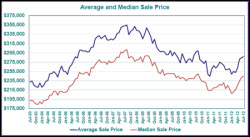Thursday, November 3, 2011
by Rob Levy, Prudential Northwest Properties
In a major decision for future land use and zoning in the Portland area, the regional Metro council voted on October 20 to expand the urban growth boundary (UGB) by 1,985 acres. All of the expanded growth areas are in Washington County. Except for 330 acres, all the expansion will be dedicated to residential development. This is a smaller expansion than has been done in the past. This decision now goes to the Oregon Land Conservation and Development Commission for final approval, which is expected in February. The decision is not without controversy, as the land use group 1000 Friends of Oregon intoned against expansion of the UGB, while the Westside Economic Alliance believes the decision was “timid, underachieving and uninspired,” and wanted more land to be included within the growth boundary.
Urban sprawl has been a major issue facing cities for decades. In response to this problem many states such as Washington and Oregon have created Urban Growth Boundaries (UGB) to limit urban sprawl by restricting growth beyond its boundaries. It allows for better management of future expansion with a focus on ‘in-fill’ of under-developed land within its borders. Several large U.S cities have adopted a UGB but none have gone as far as Portland, Oregon.
Not only does Portland have a UGB, it is unique in the U.S. for having a directly elected metropolitan planning group, called Metro. This organization is responsible for controlling growth not only in Portland but in the surrounding cites which border it spanning three counties.
Metro’s prime focus is on managing land development inside the UGB and dealing with transportation concerns. Dealing with traffic issues is usually one of the most important aspects in any UGB since the higher population density makes urban traffic problems worse. Metro is famous nationally for its promotion of light rail and trolley service through the regional transit company TriMet.
Expanding the UGB is not done lightly but in response to Metro’s mandate to keep a certain amount of population density projected out in 20-year cycles. The most recent expansion of the UGB by 1,985 acres was in direct response to the projected future need for jobs and housing. In addition to this expansion, Metro has moved to acquire land to allow a new East-West light rail line connecting the eastern edge of the UGB whose topography limits auto access.
To minimize the amount of times the UGB has to be expanded, Metro has land use laws which promote houses on smaller lots where the emphasis is on building up rather than out. For example, a plot which held in the past held two older single family homes would now be replaced with four dwellings.
Metro also works with the city governments under its umbrella to help create viable neighborhoods which have the businesses needed to limit travel for entertainment or shopping. This neighborhood emphasis has created a vibrant culture where different parts within the Metro UGB each have their own unique flavor. Metro works to balance the need for growth with the desire protect many of the natural areas which make the Portland area so desirable.





